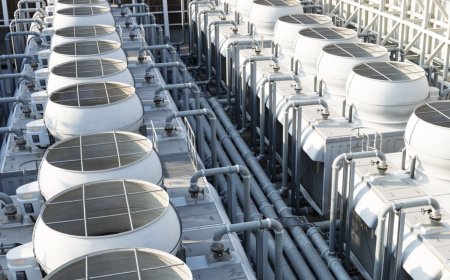How to prepare yourself Before A Wicked Annapurana Circuit Trek
Prepare for the Annapurna Circuit trek with fitness tips, gear advice, altitude awareness, permit info, and mental prep for a safe, rewarding adventure.

How to prepare yourself Before A Wicked Annapurana Circuit Trek
Getting ready for the Annapurna Circuit trek takes some solid planning in terms of fitness, mindset, and logistics to make sure you have a safe and fun time. Its a tough trek with changing altitudes, unpredictable weather, and rough paths, so its best to prepare before you head out.
Start with your fitness. Youll be hiking for hours each day, often uphill on uneven trails, so building your stamina is crucial. Try to include activities like running, cycling, swimming, or brisk walking into your routine for at least two to three months leading up to the trek. Also, work on your strength, especially in your legs, core, and back, to tackle those steep climbs and carry your backpack. Its a good idea to practice hiking with a loaded pack, so you know what to expect.
Acclimatizing to the altitude is important, too. The Annapurna Circuit goes up over 5,400 meters at Thorong La Pass, where altitude sickness can be a concern. Familiarize yourself with the signs of Acute Mountain Sickness (AMS) and plan your trip with gradual ascents and rest days to help your body get used to the height. Some people even check with their doctors about medications like Diamox for prevention.
Packing wisely is key. Go for lightweight, layered clothing that works for both warm days and cold nights. Good hiking boots that support your ankles are a must. Dont forget the essentials: a down jacket, rain gear, a headlamp, water purification tablets, and a first-aid kit. Trekking poles can also help ease the load on your knees and keep you stable.
Lastly, get your mind ready for the journey. The trek will test your stamina, patience, and adaptability to deal with unpredictable weather and trail conditions. Look into the route, permits you need, and the local culture to have a clear idea of what to expect. Keeping a positive attitude and being open to whatever comes your way will help you enjoy both the challenges and the rewards of the Annapurna Circuit trek. Know the Treks Difficulty and Duration
The Annapurna Circuit is a tough trek that usually takes about 15 to 20 days, covering a lot of different terrain and reaching heights of around 5,416 meters at Thorong La Pass. It's important to get a grip on how hard the trek is to avoid surprises. While it's doable for those with some experience, the long hiking days, steep climbs, and unpredictable weather can make it challenging. Knowing how long itll take helps you plan rest days and acclimatization stops to avoid altitude sickness. Learning about the trail itself, daily walking distances, and elevation can help you get ready both mentally and physically. Being aware of the treks demands lets you set realistic expectations, pace yourself, and soak in the beautiful views without wearing yourself out or hurting yourself.
Get a Solid Medical Check-Up
Before you hit the Annapurna Circuit, its a good idea to get a thorough medical check-up. Trekking at high altitudes can put a lot of stress on your heart and lungs, so knowing your health status is key. Talk to your doctor about your plans and get tests done to assess your heart and lung fitness. If you have conditions like asthma, high blood pressure, or diabetes, discuss how the altitude might affect you and what to do. Its wise to chat about altitude sickness medications, too. Getting vaccinated for common travel bugs and bringing any prescribed meds means youre ready for whatever might come your way.
Build Your Fitness and Endurance
Getting in shape is important for a successful trek on the Annapurna Circuit. Start training at least two to three months before your trip, focusing on cardio exercises like running, cycling, and swimming to build stamina. Also include strength training, especially for your legs, core, and back, since youll be doing long uphill climbs and carrying a pack. Practice hiking with a loaded backpack to mimic real trek conditions. Dont skip stretching and flexibility exercises to reduce the risk of injury. Regular workouts will boost your endurance and confidence, letting you tackle the steep parts of the trail more easily.
Check Weather Conditions and Best Seasons
Knowing what the weather will be like and picking the right time to trek are super important for a good Annapurna Circuit experience. The best times are spring (March to May) and autumn (September to November) when the weather is usually nice. Spring has beautiful blooming rhododendrons, while autumn offers clear skies and great mountain views. Try to avoid the monsoon season (June to August) due to heavy rains and slippery trails. Winter (December to February) can be freezing, especially at high altitudes, with snow blocking trails. Checking weather forecasts before and during your trek will help you stay safe and comfortable.
Get Your Trekking Permits (ACAP & TIMS)
Before starting the Annapurna Circuit, you need to get the right permits. Youll need the Annapurna Conservation Area Permit (ACAP) and the Trekkers Information Management System (TIMS) card. The ACAP helps protect the environment and supports the local community, while the TIMS keeps track of trekkers' safety. You can get these permits in Kathmandu or Pokhara, and it's important to keep them with you because there are regular checks along the route. Getting your permits sorted in advance saves you from last-minute issues and supports responsible trekking.
Invest in Good Trekking Gear and Clothing
Picking the right gear is key for staying comfortable and safe on the Annapurna Circuit. Buy sturdy, waterproof hiking boots that give good ankle support for rocky trails. Layering your clothing is a muststart with moisture-wicking base layers, add insulating mid-layers, and finish with waterproof outer layers for unpredictable weather. A down jacket is essential for cold nights and high altitudes. Dont forget basics like gloves, a warm hat, and UV-protective sunglasses. Bringing a decent sleeping bag rated for cold weather and trekking poles can improve your trek. Quality gear might be pricey, but it keeps you dry, warm, and injury-free.
Learn Basic First Aid and Altitude Sickness Awareness
Having some first aid knowledge and knowing about altitude sickness is super important when trekking the Annapurna Circuit. Altitude sickness can feel anything from mild headaches to serious issues. Be able to spot early signs like dizziness and shortness of breath. Bring a basic first aid kit with things like bandages, painkillers, and altitude sickness meds. Understanding how to care for yourself, like resting, staying hydrated, and seeking medical attention if symptoms get bad, ensures you can handle minor injuries and stay safe.
Plan Your Route and Accommodations Ahead of Time
Even though there are plenty of teahouses and lodges along the Annapurna Circuit, its smart to plan your daily route and where you'll stay ahead of time. The high season can get crowded, making rooms harder to find. Booking your accommodations in advance can save you stress. Knowing the distances between stops helps you pace yourself and plan acclimatization days. Some sections have limited lodging, so it's useful to know where you'll spend each night, especially in more remote areas. Having a flexible plan but a clear route helps you enjoy the trek without added stress.
Pack Smart: Essentials vs. Weight Management
Packing smart is all about balancing what you need and what you can carry comfortably. Overpacking will wear you out. Focus on the essentials: layered clothing, waterproof gear, good boots, a first aid kit, water purification tools, snacks, and permits. Use compression bags to save space and avoid packing things you dont need. Keeping your pack at around 10-12 kilograms helps you stay mobile and prevent injuries. A well-packed bag means you can enjoy the trek without feeling weighed down.
Mental Preparation: Stay Patient and Positive
Your mental strength is just as crucial as fitness for the Annapurna Circuit trek. You'll face long days, changing weather, and altitude challenges. Building patience and a positive perspective helps you stay motivated through tough times. Embrace the ups and downs, and focus on the amazing experiences and sights along the way. Mental prepping involves setting realistic expectations, being flexible, and practicing mindfulness. A positive attitude not only enhances your experience but also helps you enjoy the adventure more.
How to Get Ready for the Annapurna Circuit Trek?
Getting ready for the Annapurna Circuit trek is all about building your fitness, planning logistics, and getting your head in the game. Start working on your cardio by running, cycling, or swimming a couple of months before the trek. Dont forget to include some strength training to strengthen your legs, core, and back for those tough uphill hikes with a backpack. Check out the route to know the daily distances, altitude changes, and any challenges you might face. Make sure to snag the right permits, like ACAP and TIMS, ahead of time. Also, gather the right gear, including layers of clothing, good boots, and trekking poles. Brush up on basic first aid and know the signs of altitude sickness. Finally, plan your route and places to stay to help with acclimatization and give yourself some rest days.
How to Prepare for ABC?
To gear up for the Annapurna Base Camp (ABC) trek, youll want to mix in some physical training and smart packing. Start boosting your endurance with some aerobic workouts, like hiking, jogging, or cycling. Work on your leg and core strength to handle the rough ground and long treks. Make sure you have the right gear: a waterproof jacket, warm layers, sturdy hiking boots, and a decent sleeping bag. Familiarize yourself with the route, weather patterns, and risks tied to altitude. Dont forget your permits and plan your food and water supplies carefully. Mental prep is just as vitalstay positive and be ready to roll with the punches if conditions change on the trail.
How Fit Do You Need to Be for the Annapurna Circuit?
To tackle the Annapurna Circuit, you should be in decent shape. The trek will have you walking for 5 to 8 hours a day on tough, steep, and sometimes uneven paths. You dont need any serious climbing skills, but being fit is important for endurance, leg strength, and general cardio. Focus your training on hiking with a backpack, doing aerobic workouts, and building strength. Being fit helps you get less tired, lowers your injury risk, and eases acclimatization. Beginners can do the trek, but if youre not in good shape or have health issues, it could be pretty tough.
What to Wear on the Annapurna Circuit?
On the Annapurna Circuit, layering is your friend since temperatures can change a lot. Start with moisture-wicking base layers to stay dry. Also Cost of Annapurna Base Camp Trek is not so high. Add some warm mid-layers like fleece or down jackets for the chilly mornings and nights. A waterproof and windproof outer layer is key for protection against rain, snow, and wind. Good, durable hiking boots that support your ankles are a must. Also, pack warm accessories, like a hat, gloves, and thermal socks. Dont forget sunglasses and sunscreen since the sun can be strong at high altitudes. Lastly, get some comfy trekking pants and breathable shirts for those long hikes.





































